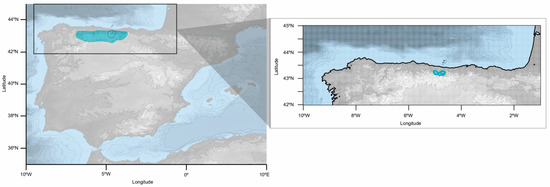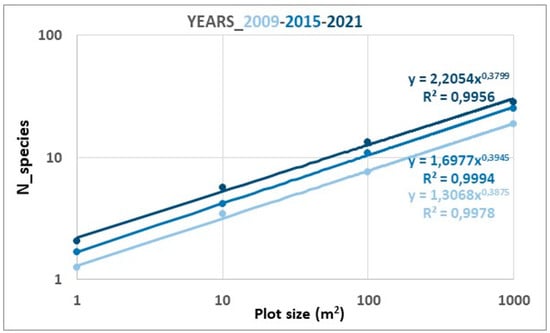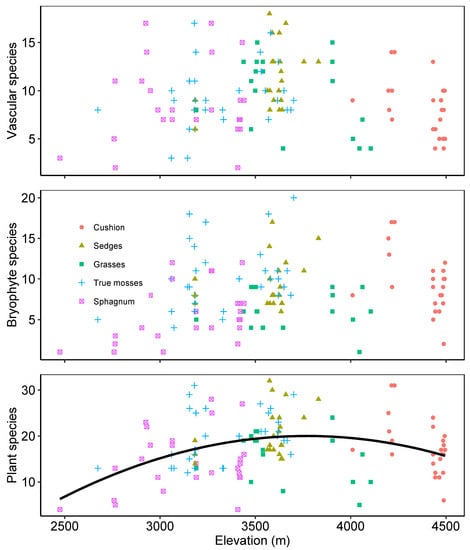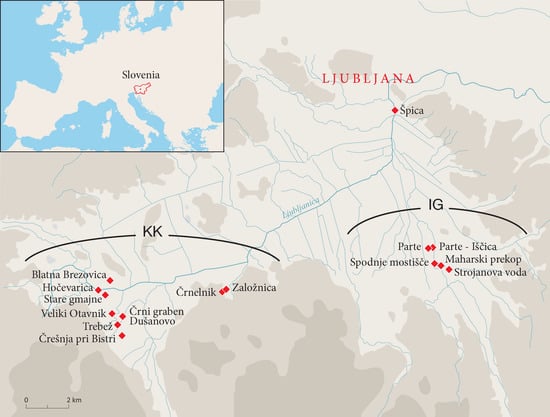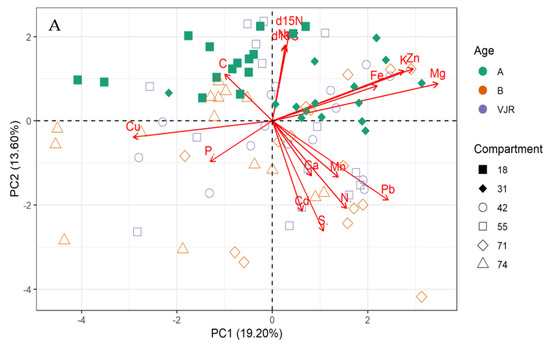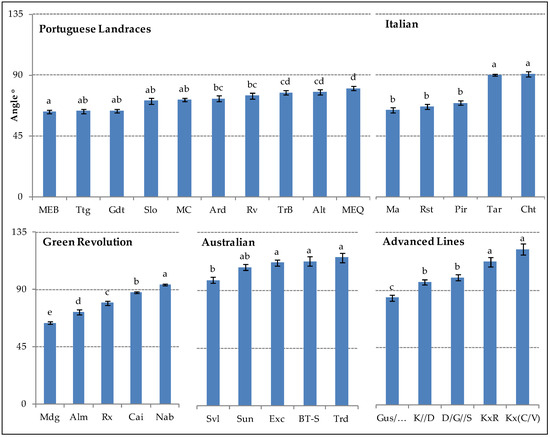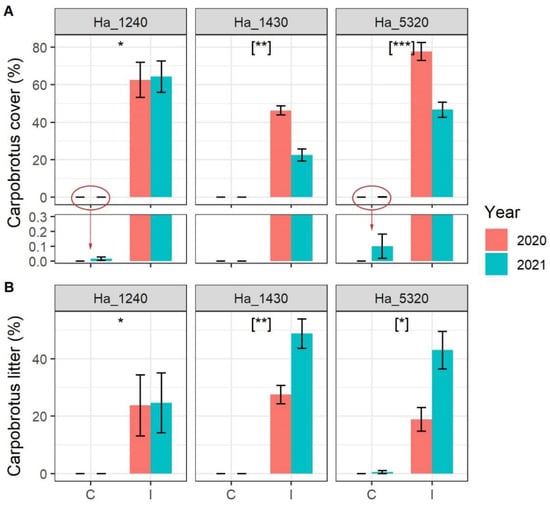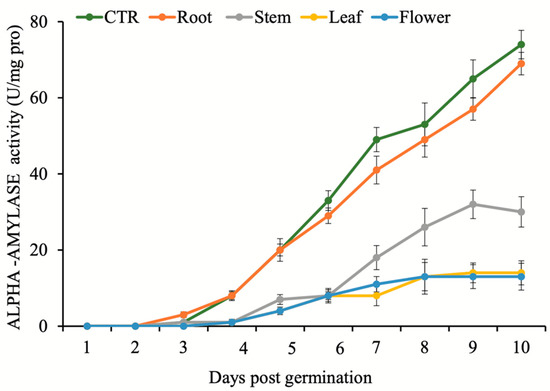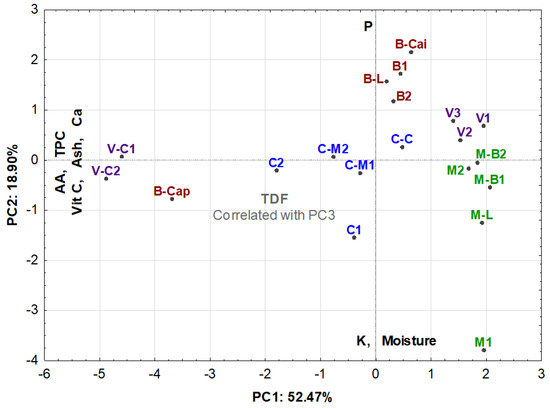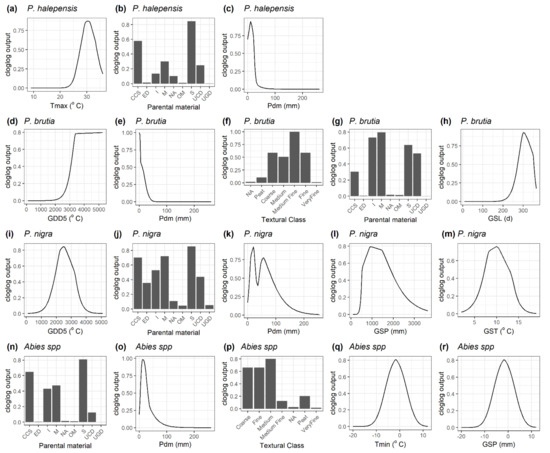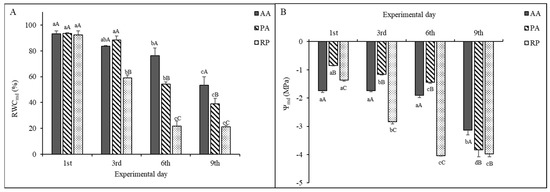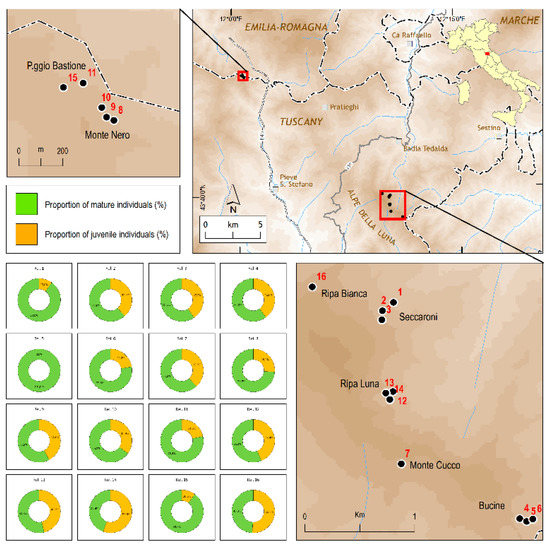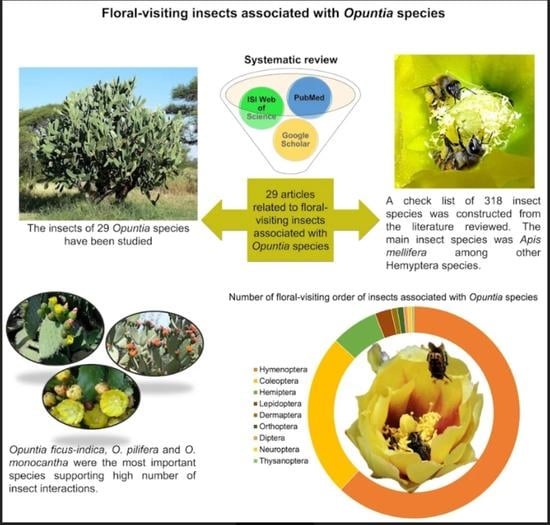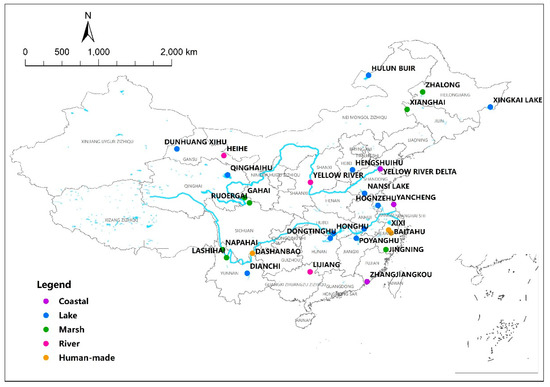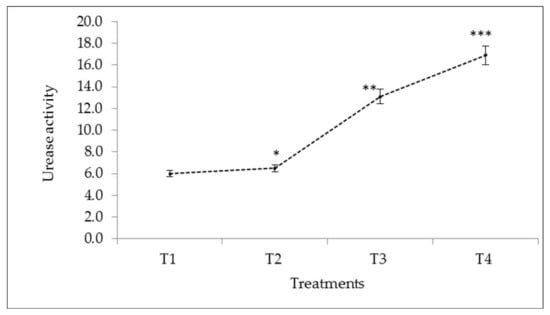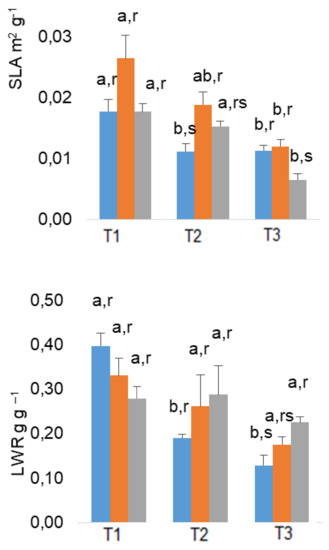Feature Papers in Plant Ecology
A topical collection in Plants (ISSN 2223-7747). This collection belongs to the section "Plant Ecology".
Viewed by 52344
Share This Topical Collection
Editors
 Prof. Dr. Ismael Aranda
Prof. Dr. Ismael Aranda
 Prof. Dr. Ismael Aranda
Prof. Dr. Ismael Aranda
E-Mail
Collection Editor
INIA, Ctr Invest Forestales CIFOR, Carretera Coruna Km 7,5, 28040 Madrid, Spain
Interests: drought stress; plant ecology; plant physiology; plant environmental stress; plant biology
 Dr. Fernando Henrique Reboredo
Dr. Fernando Henrique Reboredo
 Dr. Fernando Henrique Reboredo
Dr. Fernando Henrique Reboredo
E-Mail
Website
Collection Editor
Department of Earth Sciences, Faculty of Sciences and Technology, New University of Lisbon, 2829-516 Caparica, Portugal
Interests: environmental impact assessment; environmental analysis; ecology; plant biology; food; forestry; agroforestry
Special Issues, Collections and Topics in MDPI journals
 Prof. Dr. Roberta Masin
Prof. Dr. Roberta Masin
 Prof. Dr. Roberta Masin
Prof. Dr. Roberta Masin
E-Mail
Website
Collection Editor
Department of Agronomy, Food, Natural Resources, Animals and Environment (DAFNAE), University of Padova, Viale dell’Università 16, 35020 Legnaro, Italy
Interests: seed biology; seed germination; seed dormancy; soil seedbank; seed persistence; seedling emergence and early growth; plant phenology
Special Issues, Collections and Topics in MDPI journals
Topical Collection Information
Dear Colleagues,
As follows from the title, this Topical Collection “Feature Papers in Plant Ecology” aims to collect high quality research articles, short communications, and review articles in all the fields of Plant Ecology.
In particular (but not exclusively), this Collection invites contributions that report on:
- Plant ecophysiology
- Plant population ecology
- Community ecology
- Ecosystem ecology
- Landscape ecology and biosphere ecology
- Conservation ecology
- Evolutionary ecology
- Theoretical ecology
- Terrestrial ecology
- Applied ecology
- Biodiversity
Dr. Ismael Aranda
Prof. Fernando Henrique Reboredo
Prof. Dr. Roberta Masin
Guest Editors
Manuscript Submission Information
Manuscripts should be submitted online at www.mdpi.com by registering and logging in to this website. Once you are registered, click here to go to the submission form. Manuscripts can be submitted until the deadline. All submissions that pass pre-check are peer-reviewed. Accepted papers will be published continuously in the journal (as soon as accepted) and will be listed together on the collection website. Research articles, review articles as well as short communications are invited. For planned papers, a title and short abstract (about 100 words) can be sent to the Editorial Office for announcement on this website.
Submitted manuscripts should not have been published previously, nor be under consideration for publication elsewhere (except conference proceedings papers). All manuscripts are thoroughly refereed through a single-blind peer-review process. A guide for authors and other relevant information for submission of manuscripts is available on the Instructions for Authors page. Plants is an international peer-reviewed open access semimonthly journal published by MDPI.
Please visit the Instructions for Authors page before submitting a manuscript.
The Article Processing Charge (APC) for publication in this open access journal is 2700 CHF (Swiss Francs).
Submitted papers should be well formatted and use good English. Authors may use MDPI's
English editing service prior to publication or during author revisions.
Published Papers (22 papers)
Open AccessArticle
What Hides in the Heights? The Case of the Iberian Endemism Bromus picoeuropeanus
by
Claudia González-Toral, Herminio S. Nava, José Antonio Fernández Prieto and Eduardo Cires
Viewed by 1100
Abstract
Bromus picoeuropeanus is a recently described species belonging to a complex genus of grasses. It inhabits stony soils at heights ranging from 1600 to 2200 m in Picos de Europa (Cantabrian Mountains, northern Spain). This species is morphologically very similar to
B. erectus
[...] Read more.
Bromus picoeuropeanus is a recently described species belonging to a complex genus of grasses. It inhabits stony soils at heights ranging from 1600 to 2200 m in Picos de Europa (Cantabrian Mountains, northern Spain). This species is morphologically very similar to
B. erectus, partially sharing its presumed distribution range. We aim to determine the relationship between these species and their altitudinal ranges in Picos de Europa and the Cantabrian Mountains by conducting phylogenetic analyses based on nuclear (ETS and ITS) and chloroplastic (trnL) markers. Phylogenetic trees were inferred by Maximum Likelihood and Bayesian Inference. Haplotype networks were estimated based on the plastid marker. Although the ITS topologies could not generate exclusive clades for these species, the ETS analyses generated highly supported
B. picoeuropeanus exclusive clades, which included locations outside its altitudinal putative range. The ETS-ITS and ETS-ITS-trnL topologies generated
B. picoeuropeanus exclusive clades, whereas the trnL-based trees and haplotype networks were unable to discriminate
B. erectus and
B. picoeuropeanus. This evidence suggests that
B. picoeuropeanus is a separate species with a larger distribution than previously thought, opening new questions regarding the evolution of
B. erectus and other similar species in European mountainous systems. However, more information is needed regarding
B. picoeuropeanus susceptibility to temperature rises.
Full article
►▼
Show Figures
Open AccessArticle
Spontaneous Primary Succession and Vascular Plant Recovery in the Iberian Gypsum Quarries: Insights for Ecological Restoration in an EU Priority Habitat
by
Juan Francisco Mota, Fabián Martínez-Hernández, Esteban Salmerón-Sánchez, Antonio Jesús Mendoza-Fernández, Francisco Javier Pérez-García and M. Encarna Merlo
Cited by 4 | Viewed by 1430
Abstract
Gypsum covers a vast area of the Iberian Peninsula, making Spain a leader in its production. Gypsum is a fundamental raw material for modern societies. However, gypsum quarries have an obvious impact on the landscape and biodiversity. Gypsum outcrops host a high percentage
[...] Read more.
Gypsum covers a vast area of the Iberian Peninsula, making Spain a leader in its production. Gypsum is a fundamental raw material for modern societies. However, gypsum quarries have an obvious impact on the landscape and biodiversity. Gypsum outcrops host a high percentage of endemic plants and unique vegetation, considered a priority by the EU. Restoring gypsum areas after mining is a key strategy to prevent biodiversity loss. For the implementation of restoration approaches, understanding vegetation’s successional processes can be of invaluable help. To fully document the spontaneous succession in gypsum quarries and to evaluate its interest for restoration, 10 permanent plots of 20 × 50 m were proposed, with nested subplots, in which vegetation change was recorded for 13 years in Almeria (Spain). Through Species-Area Relationships (SARs), these plots’ floristic changes were monitored and compared to others in which an active restoration was carried out, as well as others with natural vegetation. Furthermore, the successional pattern found was compared to those recorded in 28 quarries distributed throughout the Spanish territory. The results show that an ecological pattern of spontaneous primary auto-succession is widely recurring in Iberian gypsum quarries, which is capable of regenerating the pre-existing natural vegetation.
Full article
►▼
Show Figures
Open AccessArticle
The High-Elevation Peatlands of the Northern Andes, Colombia
by
Juan C. Benavides, Dale H. Vitt and David J. Cooper
Cited by 5 | Viewed by 1806
Abstract
Andean peatlands are important carbon reservoirs for countries in the northern Andes and have a unique diversity. Peatland plant diversity is generally related to hydrology and water chemistry, and the response of the vegetation in tropical high-elevation peatlands to changes in elevation, climate,
[...] Read more.
Andean peatlands are important carbon reservoirs for countries in the northern Andes and have a unique diversity. Peatland plant diversity is generally related to hydrology and water chemistry, and the response of the vegetation in tropical high-elevation peatlands to changes in elevation, climate, and disturbance is poorly understood. Here, we address the questions of what the main vegetation types of peat-forming vegetation in the northern Andes are, and how the different vegetation types are related to water chemistry and pH. We measured plant diversity in 121 peatlands. We identified a total of 264 species, including 124 bryophytes and 140 vascular plants. We differentiated five main vegetation types: cushion plants,
Sphagnum, true mosses, sedges, and grasses. Cushion-dominated peatlands are restricted to elevations above 4000 m. Variation in peatland vegetation is mostly driven be elevation and water chemistry. Encroachment of sedges and
Sphagnum sancto-josephense in disturbed sites was associated with a reduction in soil carbon. We conclude that peatland variation is driven first by elevation and climate followed by water chemistry and human disturbances. Sites with higher human disturbances had lower carbon content. Peat-forming vegetation in the northern Andes was unique to each site bringing challenges on how to better conserve them and the ecosystem services they offer.
Full article
►▼
Show Figures
Open AccessArticle
Evidence of Woodland Management at the Eneolithic Pile Dwellings (3700–2400 BCE) in the Ljubljansko Barje, Slovenia?
by
Welmoed A. Out, Kirsti Hänninen, Maks Merela, Anton Velušček, Caroline Vermeeren and Katarina Čufar
Cited by 2 | Viewed by 1954
Abstract
It is assumed that people practiced woodland management, i.e., coppicing and pollarding, in prehistory, but details are poorly known. This study aims for a better understanding of woodland exploitation through time in the wetland basin of the Ljubljansko barje, Slovenia, from 3700–2400 BCE
[...] Read more.
It is assumed that people practiced woodland management, i.e., coppicing and pollarding, in prehistory, but details are poorly known. This study aims for a better understanding of woodland exploitation through time in the wetland basin of the Ljubljansko barje, Slovenia, from 3700–2400 BCE (Before Common Era). To do so, uncarbonized, waterlogged wood from 16 Eneolithic pile dwellings situated in two geographical clusters that cover a time span of c. 1300 years were subjected to age/diameter analysis. It is the first time that age/diameter analysis has been applied to multiple sites from the same region. The investigated posts represent a wide range of taxa, but oak (
Quercus sp.) and ash (
Fraxinus sp.) represent 75% of the total, indicating selective use of wood for this purpose. Diameter selection of ash may have taken place as well. At both site clusters, the age/diameter data do not reveal any unequivocal evidence for woodland management. Only at the youngest sites do the data possibly show some gradually changing practices. The outcomes are discussed within the framework of recent discussions about woodland management in Europe.
Full article
►▼
Show Figures
Open AccessArticle
Elemental Composition of Above and Belowground Mangrove Tissue and Sediment in Managed and Unmanaged Compartments of the Matang Mangrove Forest Reserve
by
Waseem Razzaq Khan and Mohammed Othman Aljahdali
Cited by 1 | Viewed by 1570
Abstract
Mangrove productivity depends on the storage of nutrients and elements. Elemental concentrations were examined in leaves, roots, and sediments for three age stands (15, 25 years, and VJR) of
Rhizophora apiculata in the Matang Mangrove Forest Reserve (MMFR). Six compartments with two compartments
[...] Read more.
Mangrove productivity depends on the storage of nutrients and elements. Elemental concentrations were examined in leaves, roots, and sediments for three age stands (15, 25 years, and VJR) of
Rhizophora apiculata in the Matang Mangrove Forest Reserve (MMFR). Six compartments with two compartments each for each age group were used to analyze sixteen elements. Four types of elemental patterns were examined with decreasing order during analysis: (1) Cd < Cu < Pb < Zn < Mg < Mn < Fe < K < Na < Ca and P% < S% < N% < C% in leaves, (2) Cd < Pb < Cu < Zn < Mg < Mn < Fe < K < Na < Ca and P% < S% < N% < C% in roots, (3) Cd < Pb < Cu < Zn < Mg < Mn < K < Fe < Na < Ca and P% < N% < S% < C% in sediment samples and (4) Cd
(S) < Pb
(S) < Cu
(S) < Zn
(S) < Mg
(S) < Mn
(L) < K
(L) < Fe
(S) < Na
(R) < Ca
(R) and P%
(S) < S%
(S) < N%
(L) < C%
(R) collectively for all samples. Evidence that elements do not store primarily in above-ground biomass can be found in the observation that elements are stored more in sediment and roots. The outcome of the present study shows that the rate of increase of elements in trees (leaves and roots) was less as compared to sediments, where the elemental concentration increased considerably with time. Elemental concentration comparison within three age classes showed that C, N, and S were significantly different in all three types of samples. The δ15N ratios showed positive values in all six compartments which supported the concept that the δ15N ratio could not be observed in N concentration in this study. The δ13C values showed more negative values in all six compartments which represented less salinity and a freshwater intake. The S, P, and heavy metals concentrations were high. The concentrations of Cd, P, N, C, and S in the sediment influenced variations in four compartments in accordance with the three mangrove age groups. The results of this study can be utilized to create management plans for MMFR and conduct risk assessments of the elements’ concentration in sediment.
Full article
►▼
Show Figures
Open AccessArticle
Phenotypic Diversity of Seminal Root Traits in Bread Wheat Germplasm from Different Origins
by
Isabel P. Pais, Rita Moreira, José N. Semedo, Fernando H. Reboredo, Fernando C. Lidon, José Coutinho, Benvindo Maçãs and Paula Scotti-Campos
Cited by 4 | Viewed by 1320
Abstract
Bread wheat (
Triticum aestivum L.) is a major staple crop, and more adapted varieties are needed to ensure productivity under unpredictable stress scenarios resulting from climate changes. In the development of new genotypes, root system traits are essential since roots have a
[...] Read more.
Bread wheat (
Triticum aestivum L.) is a major staple crop, and more adapted varieties are needed to ensure productivity under unpredictable stress scenarios resulting from climate changes. In the development of new genotypes, root system traits are essential since roots have a key function in water and nutrient uptake, and root architecture determines the plant’s ability to spatially explore the soil resources. Genetic variation in wheat root system may be assessed at the early stages of development. This study evaluates in vitro and at the seedling stage, the genetic diversity of root growth angle (RGA), seminal root number (SRN), and radicle length (RadL) in 30 bread wheat genotypes from different origins and belonging to distinct evolutive or breeding groups. SRN and RadL were analyzed at 1, 2, 3 and 6 days after sowing (DAS) and RGA was measured through the angle between the first pair of seminal roots. A large variability was found in RGA values that ranged from 63° to 122°. Although differences were found between genotypes within the same groups, the narrower angles tended to occur among landraces, while the higher RGA values were observed in advanced lines and Australian varieties. Differences were also observed as regards the SRN (1.0–3.0, 2.7–4.7, 3.2–5.0 and 4.4–6.3 at 1, 2, 3 and 6 DAS, respectively) and RadL (0.1–1.5, 2.1–5.0, 4.0–7.5 and 5.1–13.7 cm at 1, 2, 3 and 6 DAS, respectively). Genetic variability in root traits at seedling stage allows more rapid selection of genotypes better adapted to environmental and soil constraints, necessary to Portuguese Wheat Breeding Program. It will also contribute to the definition of wheat ideotypes with improved performance under Mediterranean climate conditions.
Full article
►▼
Show Figures
Open AccessEditor’s ChoiceArticle
Impacts of the Invasive Alien Carpobrotus spp. on Coastal Habitats on a Mediterranean Island (Giglio Island, Central Italy)
by
Michele Mugnai, Renato Benesperi, Daniele Viciani, Giulio Ferretti, Michele Giunti, Francesca Giannini and Lorenzo Lazzaro
Cited by 5 | Viewed by 1561
Abstract
Carpobrotus acinaciformis and
C. edulis are well-known invasive alien plants native to South Africa, whose detrimental effects on native communities are widely documented in the Mediterranean basin and thus largely managed in coastal ecosystems. Most of the literature on these species focuses on
[...] Read more.
Carpobrotus acinaciformis and
C. edulis are well-known invasive alien plants native to South Africa, whose detrimental effects on native communities are widely documented in the Mediterranean basin and thus largely managed in coastal ecosystems. Most of the literature on these species focuses on their impacts on habitats of sandy coastal dunes, while the effects of
Carpobrotus spp. invasion on other habitats such as rocky cliffs and coastal scrubs and garrigues are almost neglected. We present a study case conducted on a small Mediterranean island where
Carpobrotus spp. invaded three different natural habitats listed within the Habitat Directive 92/43/CEE (Natura 2000 codes 1240, 1430, and 5320). We surveyed the presence and abundance of native species and
Carpobrotus spp. on 44 permanent square plots of 4 m
2 in invaded and uninvaded areas in each of the three habitats. We found impacts on plant alpha diversity (intended as the species diversity within each sampled plot) in all the habitats investigated in terms of a decrease in species richness, Shannon index, and abundance. Invaded communities also showed a severe change in species composition with a strong homogenization of the floras of the three habitats. Finally, the negative effect of invasion emerged even through the analyses of beta diversity (expressing the species diversity among sampled plots of the same habitat type), with
Carpobrotus spp. replacing a large set of native species.
Full article
►▼
Show Figures
Open AccessArticle
Phytotoxic Effects of Catnip (Nepeta meyeri Benth.) on Early Growth Stages Development and Infection Potential of Field Dodder (Cuscuta campestris Yunck)
by
Farid Shekari, Fariborz Shekari, Javad Najafi, Amin Abassi, Zahra Radmanesh and Atle Magnar Bones
Cited by 2 | Viewed by 1600
Abstract
Dodder (
Cuscuta campestris Yunck.) is one of the most devastating parasitic plants, which reduces quantity and quality of crops. The inhibitory effect of catnip (
Nepeta meyeri Benth.) extracts on germination and some seedling characteristics of the
C. campestris were investigated in
[...] Read more.
Dodder (
Cuscuta campestris Yunck.) is one of the most devastating parasitic plants, which reduces quantity and quality of crops. The inhibitory effect of catnip (
Nepeta meyeri Benth.) extracts on germination and some seedling characteristics of the
C. campestris were investigated in three phases in a laboratory and greenhouse. Aqueous extracts from different organs of
N. meyeri were used in bioassays. The
N. meyeri extracts reduced germination percent, root and shoot growth, and dry weight of
C. campestris seedlings. Moreover, results showed an inhibitory effect of the
N. meyeri extracts on the activity of alpha-amylase, protease, and beta-1,3-glucanase enzymes in
C. campestris germinating seeds. Under greenhouse conditions,
C. campestris seeds were planted with 30-day-old alfalfa plants and irrigated with
N. meyeri extracts. The application of extracts from different organs of
N. meyeri reduced emergence percent and length of stem and hampered
C. campestris attachment to alfalfa.
N. meyeri extracts also inhibited the activity of antioxidant enzymes and increased the accumulation of hydrogen peroxide and the malondialdehyde in
C. campestris seedlings. The strongest inhibitory effects were observed from flower, leaf, and stem extracts of
N. meyeri, respectively. However, after
C. campestris attachment to alfalfa plants, treatment by
N. meyeri extracts did not exhibit any effect on infestation efficiency and
C. campestris growth traits. According to these findings,
N. meyeri extract, especially from flower and leaf, may be recommended as a potent bio-control agent to control germination and early stage development of
C. campestris.
Full article
►▼
Show Figures
Open AccessArticle
Relating Trait Variation to Species and Community Productivity in Contrasting Oro-Mediterranean Pastures: A 7-Years Study in the Pollino National Park (S-Italy)
by
Domenico Gargano, Giuseppe Fenu, Nicodemo G. Passalacqua, Aldo Schettino and Liliana Bernardo
Cited by 1 | Viewed by 1046
Abstract
Understanding how functional traits influence community assemblage and functioning is crucial for assessing the effects of global change on vegetation composition. We studied the functional composition (i.e., plant size (SIZE), leaf area (LA), specific leaf area (SLA), and leaf dry matter content (LDMC))
[...] Read more.
Understanding how functional traits influence community assemblage and functioning is crucial for assessing the effects of global change on vegetation composition. We studied the functional composition (i.e., plant size (SIZE), leaf area (LA), specific leaf area (SLA), and leaf dry matter content (LDMC)) of a xerophile pasture and a mesophile grassland in southern Italy, and recorded species richness (SR), plant cover (COV) and flowering rates (FLOW) over a 7-year period. Both communities revealed the dominance of stress-tolerators, probably reflecting an adaptation to the Mediterranean climate. The functional classification of species distinguished three groups. Species from the mesophile community had larger SIZE and LA, while those from the xerophile pasture showed higher LDMC; SLA was not connected to the source community. Community-level analyses confirmed such patterns, but with higher SLA in the mesophile grassland. While SR was comparable, COV and FLOW varied between the communities. At the species level, LDMC was positively related to FLOW and the inter-annual variability of COV and FLOW. At the community level, SIZE, LA and SLA were positively related to COV, while LDMC was positively related to FLOW. Trait variations can significantly contribute to the xerophile–mesophile shift in Mediterranean mountain vegetation, by regulating the productivity of species and communities in the two contexts and, possibly, their responsiveness to global change.
Full article
►▼
Show Figures
Open AccessArticle
Nutritional Properties of Baobab Pulp from Different Angolan Origins
by
Sara Monteiro, Fernando H. Reboredo, Maria Manuela Lageiro, Vanda M. Lourenço, João Dias, Fernando Lidon, Marta Abreu, António P. L. Martins and Nuno Alvarenga
Cited by 6 | Viewed by 2357
Abstract
The baobab tree (
Adansonia digitata L.) is found widely in the forests and savannas of sub-Saharan Africa. The baobab fruit has a sour and slightly sweet taste and is widely consumed by the natives, thus containing a high nutritional value and providing
[...] Read more.
The baobab tree (
Adansonia digitata L.) is found widely in the forests and savannas of sub-Saharan Africa. The baobab fruit has a sour and slightly sweet taste and is widely consumed by the natives, thus containing a high nutritional value and providing a source of income for rural people. This study aimed to compare the nutritional composition of baobab fruit pulp from different localities in the Namibe province (Angola). Twenty samples of baobab pulp were collected in markets of the four municipalities of Namibe. The results obtained showed that there is some geographic location dependence on nutritional and functional composition. The municipality of Camucuio showed samples with higher fibre content (56.62 g/100 g) and vitamin C (288.9 mg/100 g). Samples from the Virei municipality stood out for their antioxidant activity (1936 mmol TE/100 g), high K content (42.4 mg/g) and higher values of protein (2.42 g/100 g). The samples collected in the municipality of Bibala stood out for their high contents of carbohydrates (28.1 g/100 g), total phenolic compounds (972 mg GAE/100 g) and Ca (3.80 mg/g). Despite the differences in origin, the high nutritional value of baobab fruit has the potential to improve the diet of thousands of people in Africa qualitatively.
Full article
►▼
Show Figures
Open AccessEditor’s ChoiceArticle
Potential Impacts of Climate Change on the Habitat Suitability of the Dominant Tree Species in Greece
by
Nikolaos M. Fyllas, Theano Koufaki, Christodoulos I. Sazeides, Gavriil Spyroglou and Konstantinos Theodorou
Cited by 19 | Viewed by 3689
Abstract
Climate change is affecting species distribution and ecosystem form and function. Forests provide a range of ecosystem services, and understanding their vulnerability to climate change is important for designing effective adaptation strategies. Species Distribution Modelling (SDM) has been extensively used to derive habitat
[...] Read more.
Climate change is affecting species distribution and ecosystem form and function. Forests provide a range of ecosystem services, and understanding their vulnerability to climate change is important for designing effective adaptation strategies. Species Distribution Modelling (SDM) has been extensively used to derive habitat suitability maps under current conditions and project species distribution shifts under climate change. In this study, we model the current and future habitat suitability of the dominant tree species in Greece (
Abies cephalonica,
Abies borisii-regis,
Pinus brutia,
Pinus halepensis,
Pinus nigra,
Quercus ilex,
Quercus pubescens,
Quercus frainetto and
Fagus sylvatica), based on species-specific presence data from the EU-Forest database, enhanced with data from Greece that is currently under-represented in terms of tree species occurrence points. By including these additional presence data, areas with relatively drier conditions for some of the study species were included in the SDM development, yielding a potentially lower vulnerability under climate change conditions. SDMs were developed for each taxon using climate and soil data at a resolution of ~1 km
2. Model performance was assessed under current conditions and was found to adequately simulate potential distributions. Subsequently, the models were used to project the potential distribution of each species under the SSP1-2.6 and SSP5-8.5 scenarios for the 2041–2070 and 2071–2100 time periods. Under climate change scenarios, a reduction in habitat-suitable areas was predicted for most study species, with higher elevation taxa experiencing more pronounced potential habitat shrinkages. An exception was the endemic
A. cephalonica and its sister species
A. borisii-regis, which, although currently found at mid and high elevations, seem able to maintain their potential distribution under most climate change scenarios. Our findings suggest that climate change could significantly affect the distribution and dynamics of forest ecosystems in Greece, with important ecological, economic and social implications, and thus adequate mitigation measures should be implemented.
Full article
►▼
Show Figures
Open AccessArticle
Impact of Horse Grazing on Floristic Diversity in Mediterranean Small Standing-Water Ecosystems (SWEs)
by
Giuseppe Fenu, Arianna Melis, Maria Silvia Pinna, Maria Cecilia Loi, Giulia Calderisi and Donatella Cogoni
Cited by 2 | Viewed by 1551
Abstract
Small standing-Water Ecosystems (SWEs), despite their pivotal ecological role due to their participation in hydrogeological processes and their richness in biodiversity, seem to be often overlooked by the scientific community. In this study, the vascular plant diversity in some representative SWEs, that host
[...] Read more.
Small standing-Water Ecosystems (SWEs), despite their pivotal ecological role due to their participation in hydrogeological processes and their richness in biodiversity, seem to be often overlooked by the scientific community. In this study, the vascular plant diversity in some representative SWEs, that host a peculiar assemblage of plant and animal species, was investigated in relation to the disturbance effects of a wild horse population. A total of 50 plots, equally distributed in small and large SWEs, were surveyed and a level of disturbance was attributed to each plot. We found greater species richness in small and undisturbed SWEs, which suggests the negative impact of horse grazing on the richness of plant species in this type of habitat. Significant differences in plant assemblage were found according to the disturbance level, whereas, contrary to what was observed for species richness, no differences were detected based on their size. The diversity indices, used to evaluate the richness and diversity in these areas, recorded the highest values for small and undisturbed areas. This result highlights that the disturbance of the horse grazing plays a pivotal role in affecting the diversity and richness of species in the SWEs. These findings suggest that SWE systems should be analyzed considering these areas as unique in order to allow the conservation of the plant richness and biodiversity of the SWE systems in conjunction with the protection of horses.
Full article
►▼
Show Figures
Open AccessArticle
Elemental Composition of Commercial Herbal Tea Plants and Respective Infusions
by
Jaime Fernandes, Fernando H. Reboredo, Inês Luis, Maria Manuela Silva, Maria M. Simões, Fernando C. Lidon and José C. Ramalho
Cited by 3 | Viewed by 2533
Abstract
This study evaluated the elemental composition of 25 herbal tea plants commonly used in infusions by Portuguese consumers and the contribution to the elemental daily intake of some essential elements.
Hydrocotyle asiatica (L.),
Matricaria chamomilla (L.), and
Melissa officinalis (L.) samples are a
[...] Read more.
This study evaluated the elemental composition of 25 herbal tea plants commonly used in infusions by Portuguese consumers and the contribution to the elemental daily intake of some essential elements.
Hydrocotyle asiatica (L.),
Matricaria chamomilla (L.), and
Melissa officinalis (L.) samples are a rich source of K with around 6.0 mg g
−1 while the Asteraceae
Silybum marianum (L.) and
Echinacea angustifolia (DC.) exhibited 4.9 and 5.6 mg g
−1 Ca, respectively. The highest concentrations of S and Zn were noted in
Hydrocotyle asiatica (L.), while the highest concentration of Sr was found in
Cassia angustifolia (Vahl.). In general, a large variability in the concentrations among different families and plant organs had been observed, except Cu with levels around 30 μg g
−1. The principal component analysis (PCA) showed positive correlations between Zn and S and Sr and Ca, also revealing that
Hydrocotyle asiatica (L.),
Echinacea angustifolia (DC.),
Silybum marianum (L.), and
Cassia angustifolia (Vahl.) samples, stands out about all other samples regarding the enrichment of macro and micronutrients. The elemental solubility of macronutrients in the infusion is greater than the micronutrient solubility, despite the contribution to the recommended daily intake was weak. As a whole,
Cynara scolymus (L.) and
Hibiscus sabdariffa (L.) are the species with the best elemental solubilities, followed by
Hydrocotyle asiatica (L.). No harmful elements, such as As and Pb, were observed in both the raw material and the infusions.
Full article
►▼
Show Figures
Open AccessArticle
Effect of Water Stress on Physiological and Morphological Leaf Traits: A Comparison among the Three Widely-Spread Invasive Alien Species Ailanthus altissima, Phytolacca americana, and Robinia pseudoacacia
by
Maria Pepe, Maria Fiore Crescente and Laura Varone
Cited by 11 | Viewed by 2730
Abstract
Invasive alien species (IAS) are a problem, especially in drought-prone environments such as the Mediterranean Basin where the exacerbation of the already severe conditions could constrain the native species acclimatation degree, creating new opportunities for IAS. Climate change may drive IAS expansions, even
[...] Read more.
Invasive alien species (IAS) are a problem, especially in drought-prone environments such as the Mediterranean Basin where the exacerbation of the already severe conditions could constrain the native species acclimatation degree, creating new opportunities for IAS. Climate change may drive IAS expansions, even if different IAS can vary in their acclimatation response. Thus, it is important to obtain a broader insight of how the different IAS face abiotic stress. This research aimed to compare the effect of the imposed water stress on physiological and morphological leaf traits of
Ailanthus altissima (AA),
Robinia pseudoacacia (RP), and
Phytolacca americana (PA), which are widely spread IAS in the Mediterranean Basin. Our results showed a species-dependent effect of the water stress at a physiological and morphological level, as well as an interaction between species and stress duration. Despite a common strategy characterized by low stomatal control of the photosynthesis, AA, PA, and RP differ in their sensitivity to water stress. In particular, even if AA was characterized by a more water-spending strategy, it was more resistant to water stress than PA and RP. In this view, the key factor was its plasticity to increase leaf mass per area (LMA) in response to water stress.
Full article
►▼
Show Figures
Open AccessArticle
Persistence of the Strictly Endemic Plants of Forest Margins: The Case of Cirsium alpis-lunae in the Northern Apennines (Italy)
by
Giuseppe Fenu, Lorenzo Lazzaro, Lorenzo Lastrucci and Daniele Viciani
Viewed by 2007
Abstract
Narrow endemic plants constitute a pivotal group for conservation, being often reduced to a small contingent of individuals and frequently threatened. However, effective conservation actions require reliable basic information about distribution range, ecological requirements, and population traits. Nevertheless, such knowledge results are incomplete
[...] Read more.
Narrow endemic plants constitute a pivotal group for conservation, being often reduced to a small contingent of individuals and frequently threatened. However, effective conservation actions require reliable basic information about distribution range, ecological requirements, and population traits. Nevertheless, such knowledge results are incomplete or even completely missing for some neglected or recently described plants, such as
Cirsium alpis-lunae, a thistle exclusive to the N-Apennines (Italy). To fill this gap, all sites where
C. alpis-lunae grow were monitored, and data on the site and population traits were collected. Our results indicated that this plant is restricted to 16 scattered sites, varied in surface area and number of individuals. Reproductive and juvenile plants showed to be affected by roughly the same variables, in particular the surface of the site, the slope aspect, and the canopy cover. The narrow ecological niche of
C. alpis-lunae was mainly determined by the canopy cover, and where coverage increases, the number of individuals decreases. The individuals only grow at forest edges, where the peculiar ecological conditions are limiting factors for the development of forestry cover; some other factors (i.e., high inclination and instability of the substrate) contribute to limiting the development of forestry vegetation and guarantee the persistence of these ecotones. Despite the great difficulties in accessing the sites where this species grows, this study presents, for the first time, a complete picture of the
C. alpis-lunae population and yielded important data to identify effective conservation measures.
Full article
►▼
Show Figures
Open AccessArticle
Cowpea Physiological Responses to Terminal Drought—Comparison between Four Landraces and a Commercial Variety
by
Cátia Nunes, Rita Moreira, Isabel Pais, José Semedo, Fernanda Simões, Maria Manuela Veloso and Paula Scotti-Campos
Cited by 13 | Viewed by 2949
Abstract
Cowpea (
Vigna unguiculata) is a robust legume; nevertheless, yield is always affected by drought, especially when it occurs during reproductive growth and seed filling. Considered a key crop in the effort to attain food security, and a suitable crop for a
[...] Read more.
Cowpea (
Vigna unguiculata) is a robust legume; nevertheless, yield is always affected by drought, especially when it occurs during reproductive growth and seed filling. Considered a key crop in the effort to attain food security, and a suitable crop for a scenario of climate change, modern disregard for cowpea landraces is particularly detrimental as it causes genetic variability loss, compromising breeding efforts. To contribute to the evaluation of the cowpea germplasm, four Portuguese landraces (L1, L2, L3, L4) were compared with a commercial variety (CV) to evaluate their physiological responses to terminal drought and their inter-variation on productivity, under semi-controlled conditions. Despite no differences in relative water content (RWC) between the CV and the landraces under water deficit (WD), differences in leaf water potential (Ψ) defined the CV as having an isohydric control of stomata in contrast with anisohydric control for landraces. There was an identical decrease in the photosynthetic rate for all plants under stress, caused by both stomatal and non-stomatal limitations, namely, damages at the level of photosystem II as indicated by fluorescence measurements. Instantaneous water use efficiency (iWUE) was improved with stress in L1 and L3. Maintenance of higher relative chlorophyll content for longer periods in the CV revealed a stay-green phenotype. The slim differences observed in terms of stomatal control, iWUE and progression of senescence between the CV and the landraces under WD led to quite important differences in terms of productivity, as inferred from improved yield (number of pods and number of grains per plant). This is a clear result of pragmatic on-farm selection. On one hand it shows that small differences in stomatal responses or water saving strategies under WD may lead to desirable outcomes and should therefore be considered during breeding. On the other hand, it suggests that other traits could be explored in view of drought adaptation. These results highlight the need to preserve and characterize as many genetic pools as possible within a species.
Full article
►▼
Show Figures
Open AccessArticle
Grain Composition and Quality in Portuguese Triticum aestivum Germplasm Subjected to Heat Stress after Anthesis
by
Paula Scotti-Campos, Karliana Oliveira, Isabel P. Pais, Ana Sofia Bagulho, José N. Semedo, Octávio Serra, Fernanda Simões, Fernando C. Lidon, José Coutinho and Benvindo Maçãs
Cited by 1 | Viewed by 2408
Abstract
Bread wheat (
Triticum aestivum) is a major crop worldwide, and it is highly susceptible to heat. In this work, grain production and composition were evaluated in Portuguese
T. aestivum germplasm (landraces and commercial varieties), which was subjected to heat after anthesis
[...] Read more.
Bread wheat (
Triticum aestivum) is a major crop worldwide, and it is highly susceptible to heat. In this work, grain production and composition were evaluated in Portuguese
T. aestivum germplasm (landraces and commercial varieties), which was subjected to heat after anthesis (grain filling stage). Heat increased the test weight (TW) in Nabão, Grécia and Restauração, indicating an improved flour-yield potential. Mocho de Espiga Branca (MEB) and Transmontano (T94) showed higher thousand-kernel weight (TKW). Gentil Rosso presented increased soluble sugars, which are yeast substrates in the bread-making process. Ardila stood out for its protein increase under heat. Overall SDS was unaffected by higher temperature, but increased in T94, indicating a better dough elasticity for bread-making purposes. Under heat, lipid content was maintained in most genotypes, being endogenous fatty acids (FAs) key players in fresh bread quality. Lipid unsaturation, evaluated through the double bond index (DBI), also remained unaffected in most genotypes, suggesting a lower flour susceptibility to lipoperoxidation. In Grécia, heat promoted a higher abundance of monounsaturated oleic (C18:1) and polyunsaturated linoleic (C18:2) acids, which are essential fatty acids in the human diet. This work highlighted a great variability in most parameters both under control conditions or in response to heat during grain filling. Cluster analysis of traits revealed a lower susceptibility to heat during grain filling in Ardila, Restauração, and Ruivo, in contrast to MEQ, which seems to be more differentially affected at this stage. Characterization and identification of more favorable features under adverse environments may be relevant for agronomic, industrial, or breeding purposes, in view of a better crop adaptation to changing climate and an improved crop sustainability in agricultural systems more prone to heat stress.
Full article
►▼
Show Figures
Open AccessSystematic Review
A Systematic Review on Opuntia (Cactaceae; Opuntioideae) Flower-Visiting Insects in the World with Emphasis on Mexico: Implications for Biodiversity Conservation
by
Perla Tenorio-Escandón, Alfredo Ramírez-Hernández, Joel Flores, Jorge Juan-Vicedo and Ana Paola Martínez-Falcón
Cited by 6 | Viewed by 3871
Abstract
Opuntia spp. are cacti with high ecological, economic and conservation interest in semiarid environments, particularly in Mexico. We conducted a systematic search of the existing peer-reviewed literature about the state of knowledge of pollination ecology on these plants. We documented the most studied
[...] Read more.
Opuntia spp. are cacti with high ecological, economic and conservation interest in semiarid environments, particularly in Mexico. We conducted a systematic search of the existing peer-reviewed literature about the state of knowledge of pollination ecology on these plants. We documented the most studied
Opuntia species worldwide with an emphasis on Mexico. We found that only 15% of
Opuntia species described have been investigated so far, and studies were mainly focused on comprehension of the biology of a single species. Despite the economic and cultural importance of
Opuntia, there is a significant lack of knowledge about the flower-visiting insects and their taxonomic identity. We provide a checklist of the insect species associated with
Opuntia spp. Through a circular network, we visualize the complex
Opuntia flower-visiting insect relationship, and we detected a set of key species constituting the generalist core of the networks constructed. Since pollination is crucial for crop production, a better understanding of ecological interactions would inform management measures to strengthen biodiversity and agriculture sustainability as well as productivity in arid and marginal lands. Further research on pollination ecology is needed to improve the conservation status of the insects associated with
Opuntia species.
Full article
►▼
Show Figures
Open AccessCommunication
Alien, Naturalized and Invasive Plants in China
by
Aiying Zhang, Xunyu Hu, Shenhao Yao, Mingjian Yu and Zhixia Ying
Cited by 25 | Viewed by 3155
Abstract
Invasive species are a subset of naturalized species, and naturalized species are a subset of alien species. Determining the relationship among these three assemblages would be helpful in predicting and preventing biological invasion. Here, we reviewed the families, lifeforms, origins, introduction pathways and
[...] Read more.
Invasive species are a subset of naturalized species, and naturalized species are a subset of alien species. Determining the relationship among these three assemblages would be helpful in predicting and preventing biological invasion. Here, we reviewed the families, lifeforms, origins, introduction pathways and phylogenetic diversity of alien, naturalized and invasive vascular plants in China. The results show that species in the Asteraceae, Fabaceae and Poaceae families had a high dominance among alien, naturalized and invasive species. Moreover, almost all alien species in the Amaranthaceae, Solanaceae, Convolvulaceae and Euphorbiaceae families became naturalized species, and about 26.7% of the naturalized species became invasive species. Perennial herbs comprised a higher proportion of alien species than did annual herbs, though annual herbs were more suited to becoming invasive than perennial herbs. A considerable proportion (57.8%) of invasive species were introduced from America. More than half (56.5%) of alien species were introduced for their ornamental value, and half of these have become naturalized in China. Moreover, about half (55.2%) of all invasive species were introduced for their economic value (including ornamental, foraging and medicinal purposes). Invasive species were phylogenetically clustered and phylogenetically distant from alien and naturalized species, which indicates that phylogenetic differences could be helpful in becoming invasive. There is no doubt that human activity plays a significant role in biological invasion. This study suggests that when introducing alien species to a region, decision-makers should certainly consider the species’ phylogeny, beyond just its fundamental characteristics.
Full article
►▼
Show Figures
Open AccessCommunication
Phylogenetic Diversity of Wetland Plants across China
by
Aiying Zhang, Zhixia Ying, Xunyu Hu and Mingjian Yu
Cited by 3 | Viewed by 2281
Abstract
Accelerating and severe wetland loss has made wetland restoration increasingly important. Current wetland restorations do not take into consideration the ecological adaptability of wetland plants at large scales, which likely affects their long-term restoration success. We explored the ecological adaptability, including plant life
[...] Read more.
Accelerating and severe wetland loss has made wetland restoration increasingly important. Current wetland restorations do not take into consideration the ecological adaptability of wetland plants at large scales, which likely affects their long-term restoration success. We explored the ecological adaptability, including plant life forms and phylogenetic diversity, of plants across 28 wetlands in China. We found that perennial herbs were more common than annual herbs, with the proportion of perennial herbs accounting for 40–50%, 45–65%, 45–70%, 50–60%, and 60–80% of species in coastal wetlands, human-made wetlands, lake wetlands, river wetlands, and marsh wetlands, respectively. A ranking of phylogenetic diversity indices (PDIs) showed an order of marsh < river < coastal < lake < human-made, meaning that human-made wetlands had the highest phylogenetic diversity and marsh wetlands had the lowest phylogenetic diversity. The nearest taxon index (NTI) was positive in 23 out of 28 wetlands, indicating that species were phylogenetically clustered in wetland habitats. Dominant species tended to be distantly related to non-dominant species, as were alien invasive species and native species. Our study indicated that annual herbs and perennial herbs were found in different proportions in different types of wetlands and that species were phylogenetically clustered in wetland habitats. To improve wetland restoration, we suggest screening for native annual herbs and perennial herbs in proportions that occur naturally and the consideration of the phylogenetic similarity to dominant native species.
Full article
►▼
Show Figures
Open AccessArticle
The Chemical Element Composition of Turmeric Grown in Soil–Climate Conditions of Tashkent Region, Uzbekistan
by
Dilfuza Jabborova, Ravish Choudhary, Rohini Karunakaran, Sezai Ercisli, Jyoti Ahlawat, Khurshid Sulaymanov, Abdulahat Azimov and Zafarjon Jabbarov
Cited by 9 | Viewed by 3821
Abstract
A mineral fertiliser has positive effects in improving turmeric nutrients, soil enzymes and soil properties. The aim of this research was to study the effect of mineral fertilisers on the content of mineral elements in turmeric rhizome, soil enzymes activity and soil properties
[...] Read more.
A mineral fertiliser has positive effects in improving turmeric nutrients, soil enzymes and soil properties. The aim of this research was to study the effect of mineral fertilisers on the content of mineral elements in turmeric rhizome, soil enzymes activity and soil properties in the Tashkent Region, Uzbekistan. For the first time in Uzbekistan, the turmeric rhizome was cultivated to study the mineral elements present in the rhizome. A microplot experiment was conducted with four treatments including T1 (Control), T2 (N
75P
50K
50 kg/ha), T3 (N
125P
100K
100 kg/ha) and T4 (N
100P
75K
75 + B
3Zn
6Fe
6 kg/ha) and turmeric rhizome, which were collected for observation along with the soil samples. The analyses indicated that the NPK + BZnFe (100:75:75:3:6:6 kg/ha) treatment significantly improved minerals such as K, Ca, P, Mg and Na contents rhizome as compared to the control without fertiliser. Likewise, the maximum quantity of micronutrient content viz., Fe, Mn, Zn, Cu, Cr and Si was also recorded in turmeric rhizome treated with NPK + BZnFe (125:100:100:3:6:6 kg/ha). It showed an increase in these micronutrients in the rhizome compared to the control, followed by a low rate of NPK (75:50:50 kg/ha). The highest content in terms of total N, P, K content, humus, active phosphorus, potassium, and enzymes activity was also observed in soil with the treatment of mineral fertiliser viz., NPK + BznFe (100:75:75:3:6:6 kg/ha), which enhanced soil nutrient and enzyme activity. The NPK + BznFe (100:75:75:3:6:6 kg/ha) treatment significantly increased the active N content by 40%, total P content by 38% and total K content by 22% in comparison to the control without mineral fertiliser. Overall, it was found that NPK + BznFe (100:75:75:3:6:6 kg/ha) was significantly valuable for enhancing the total nitrogen, phosphorus, and potassium levels in the soil compared to control, which is useful for improving soil health in terms of soil enzyme and soil nutrients. Additionally, the micronutrients in turmeric rhizome were significantly enhanced when using this combination of fertiliser applications [NPK + BznFe (100:75:75:3:6:6 kg/ha)]. Therefore, this present study revealed that the NPK+BznFe (100:75:75:3:6:6 kg/ha) could produce the most significant yield of high-quality turmeric plants and improve soil properties in Uzbek soil–climate conditions.
Full article
►▼
Show Figures
Open AccessArticle
The Tolerance of Eucalyptus globulus to Soil Contamination with Arsenic
by
Fernando Henrique Reboredo, João Pelica, Fernando C. Lidon, Maria F. Pessoa, Maria Manuela Silva, Mauro Guerra, Roberta Leitão and José C. Ramalho
Cited by 10 | Viewed by 2438
Abstract
The contamination of abandoned mining areas is a problem worldwide that needs urgent attention. Phytoremediation emerges as a successful method to extract different contaminants from the soil. In this context,
Eucalyptus globulus plants growing in soils artificial contaminated with arsenic (As) were used
[...] Read more.
The contamination of abandoned mining areas is a problem worldwide that needs urgent attention. Phytoremediation emerges as a successful method to extract different contaminants from the soil. In this context,
Eucalyptus globulus plants growing in soils artificial contaminated with arsenic (As) were used to access its phytoremediation capabilities. The effects of As on photosynthetic performance were monitored through different physiological parameters, whereas the uptake and translocation of As and the putative effects on calcium, iron, potassium, and zinc levels on plants were evaluated by X-ray fluorescence analysis. Root system is the major accumulator organ, while the translocation to the above-ground organs is poor. In the end of the experiment, the root biomass of plants treated with 200 μg As mL
−1 is 27% and 49.7% lower than equivalent biomass from plants treated with 100 μg As mL
−1 and control plants, respectively. Each plant can accumulate 8.19 and 8.91 mg As after a 6-month period, when submitted to 100 As and 200 As, respectively. It seems to exist an antagonistic effect of As on Zn root uptake by
E. globulus. In general, the tested concentrations do not influence negatively plant metabolism, indicating that this species is suitable for plantation in contaminated areas.
Full article
►▼
Show Figures
Planned Papers
The below list represents only planned manuscripts. Some of these
manuscripts have not been received by the Editorial Office yet. Papers
submitted to MDPI journals are subject to peer-review.
Title: Potential impacts of climate change on the habitat suitability of seven dominant tree species in Greece
Authors: Nikolaos M. Fyllas
Affiliation: University of the Aegeandisabled, Mytilene, Greece
Abstract: Climate change is affecting species distribution and ecosystem form and function. Forests provide a range of ecosystem services and understanding their vulnerability to climate change is important for designing effective adaptation strategies. Species Distribution Modelling (SDM) has been extensively used to project potential range shifts of forest species under climate change scenarios, but lack of spatial data frequently limits their applicability. In this study we focus on the spatial distribution of seven dominant tree species in Greece (pines, firs and oaks), which although found across a range of environmental conditions are poorly described in terms of their presence in pan-european species presence databases. We extended the European Atlas of Forest Tree Species database with our own observations and data from forest stewardship plans from only 117 datapoints to 2556 datapoints for the seven study species in Greece. We then developed SDMs for each taxon under current climate conditions, using the maximum entropy algorithm. Climate and soil data at a resolution of ~1 km2 were used as predictive variables. After fitting SDMs under current conditions and validating their performance, we used the models to project the potential distribution of each species under RCP45 and RCP85 for the 2060-2080 period. The distributions of all study species were adequately simulated under current conditions. Following both climate change scenarios significant reductions in the range of potential distribution of all species were simulated except for two drought tolerant pines. Our findings suggest that climate change might significantly affect the distribution and dynamics of the Greek forest sector with important ecological, economic and social implications, and thus adequate mitigation measures should be implemented.
Title: Persistence of strictly endemic plant species of forest margins: the case of Cirsium alpis-lunae in the northern Apennines (Italy).
Authors: Fenu G., Lazzaro L., Lastrucci L., Viciani D.
Affiliation: Institute of Agricultural and Environmental Sciences, Estonian University of Life Sciences, Kreutzwaldi 5, 51006 Tartu, Estonia
Abstract: Narrow endemic plants constitute a pivotal group for conservation being often reduced to a small contingent of individuals and frequently threatened. However effective conservation actions require reliable basic information about distribution range, ecological requirements, and population traits. Nevertheless, such knowledge results incomplete or even completely missing for plants neglected or recently described such as Cirsium alpis-lunae, a thistle exclusive to the N-Apennines (Italy). To fill this gap, all sites where C. alpis-lunae grow were monitored and data on site and population traits was collected. Our results indicated that this plant is restricted to 16 scattered sites, variables in surface-area and number of individuals. Reproductive and juvenile plants showed to be affected by roughly the same variables, in particular the surface of the site, the slope aspect, and the canopy cover. The narrow ecological niche of C. alpis-lunae was mainly determined by the canopy cover and where coverage increases, the number of individuals decreases. The individuals only grow at forest edges, where the peculiar ecological conditions are limiting factors for the development of forestry cover; some other factors (i.e. high inclination and instability of the substrate) contribute to limiting the development of forestry vegetation and guarantee the persistence of these ecotones. Despite the great difficulties in accessing the sites where this species grows, this study presents for the first time a complete picture of the C. alpis-lunae population and yielded important data to identify effective conservation measures.
Title: Baobab characterization from different Angolan municipalities
Authors: Sara Monteiro 1; Fernando Reboredo; Maria Manuela Lageiro; Vanda Lourenço; João Dias; Fernando Lidon; Nuno Alvarenga 2*
Affiliation: Technology and Innovation Unit, National Institute of Agrarian and Veterinary Research, I. P. (INIAV), Av. da República, Quinta do Marquês, 2780-157 Oeiras, Portugal
Abstract: Baobab, the fruit of the baobab tree (Adansonia digitata L.) is found widely in the forests and savannas of sub-Saharan Africa. The baobab fruit has a sour and slightly sweet taste and is widely consumed by the natives thus containing a high nutritional value. Throughout Africa, the marketing of baobab fruit provides a source of income for rural people. The goal of the present study was to compare the nutritional composition of baobab fruit pulp from different localities in the Namibe province (Angola). Twenty samples of baobab pulp were collected in markets of the 4 municipalities of Namibe. The results obtained showed that there is some dependence of the geographic location on nutritional and functional composition. For example, the municipality of Camucuio showed samples with higher fiber content (56.62 g/100g) and vitamin C (288.9 mg/100g). The municipality of Virei stood out for its antioxidant activity (484.6 g/troloxE/100g), high K content (42.37 mg/g) and higher values of protein (2.42 g/100g). The samples collected in the municipality of Bibala stood out for their high contents of carbohydrates (28.06 g/100g), phenolic compounds (972.2 mg AGE/100g) and Ca (3797 mg/kg). In conclusion, the high nutritional value of baobab, despite the differences re-garding the origin, has potential to qualitatively improve the diet of thousands of peo-ple in Africa








